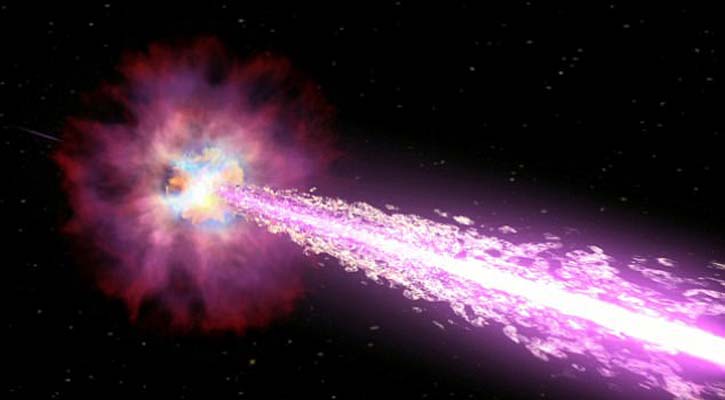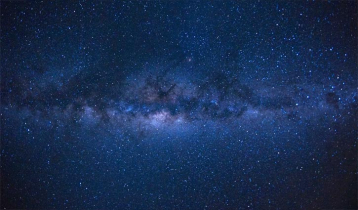Biggest explosion in universe captured in unprecedented detail
4 || risingbd.com

Risingbd Desk: The most powerful types of explosion in the universe, created by the explosive death of a massive star, has been captured in unprecedented detail.
The breakthrough provides the clearest picture yet of gamma ray bursts, which have fascinated astronomers ever since they were first discovered in the late 1960s.
The huge explosions give off as much energy in seconds as the sun in its entire 10 billion year lifetime.
It was so bright it could have been seen 'with a pair of binoculars' despite happening 10 billion light years from Earth, according to the team that recorded it.
An international team of experts recorded the short-lived event, which can last from a few milliseconds to about a minute.
A gamma ray burst (GRBs) happens when a massive star dies, collapses into a brand new black hole and explodes as a supernova.
It spews out jets of gas across the universe at the speed of light.
Thanks to an incredible stroke of luck the scientists were given a warning, in the form of a brief flash of light before the main event.
Robotic telescopes spotted the blast, dubbed GRB 160625B, in June 2016.
This allowed them to witness the massive explosion, second only to the Big Bang in size, and record new data about how they occur.
Professor Carole Mundell at the University of Bath, who was involved with the study, said: 'It was so bright you could have seen it with a pair of binoculars.
'They usually happen instantly, but this time we got a flash of light lasting a second that acted as a warning.
'Then there was a delay of about 100 seconds, giving us enough time to position the telescopes.
'That is quite unusual, and the burst lasted longer than normal, a few minutes which was fortunate.
'Although very distant, this burst was extremely bright and we were excited when we realised our super-fast robotic telescopes had captured the early time light.'
Short-lived GRBs are intense flashes of high energy light detected by space-based telescopes orbiting above the Earth's atmosphere.
But they have been hard to explain with standard explosion theories.
Magnetic fields were suspected as being key but this was hard to prove since the explosions happen many millions of light years from Earth and are gone in seconds or minutes, never to repeat.
Using new, autonomous robotic telescopes the team were able to measure a special property of the light that probes magnetic fields, it's polarisation.
The group's data suggest strong magnetic fields form close to the new black hole and drive energy and material outwards in a tightly focused beam.
The study also suggests synchrotron radiation, which results when electrons are accelerated in a curved or spiral pathway, powers the initial, extremely bright phase of the burst, known as the 'prompt' phase.
Until now there had been several other possible explanations but these results give a clearer picture of what physical conditions create GRBs.
Professor Mundell added: 'We have shown previously using slower autonomous robotic telescopes that magnetic fields must be important and help to guide the material outwards at high speed.
'But, until now, we were never fast enough to capture bright visible light at the same time as the high energy gamma rays produced during the explosion itself.
'There is intense debate about the nature of these high speed flows - how material can be accelerated to such high speeds, what physical mechanism produces the light that we catch with our high-energy satellites, and most of all, what, if anything, is the role and origin of magnetic fields.
'Our results are important because they show that magnetic fields are present close to the central black hole, are threaded through the material that is ejected at ultra-high speeds in the explosion and ultimately focus and accelerate the material to large distances from the black hole.'
Nasa's Fermi Gamma-ray Space Telescope first detected the gamma-ray emission from GRB160625B.
Source: The Mail
risingbd/July 27, 2017/Mukul
risingbd.com






































